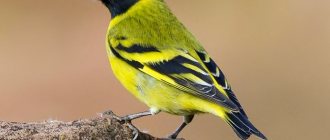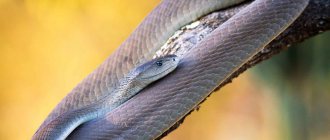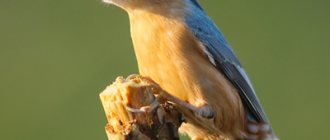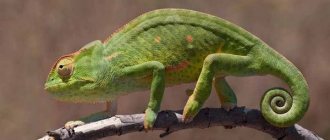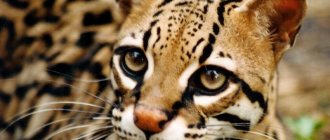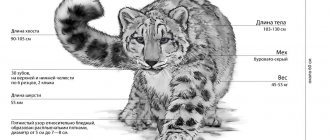We are all somehow accustomed to an ordinary cat, living next to a person for centuries. Everyone knows the familiar pet purring near a saucer of milk. But not their wild counterparts living in the forests of Eurasia and the African continent. There are several representatives of the wild cat species.
Forest cats are usually slightly larger than domestic cats and are well adapted to life in the wild. Having met a handsome wild animal in the forest, you should not think that it is Vaska who has gotten lost, but let the animal go its own way.
History of the species
Scientists believe that the Forest Cat appeared in the Pleistocene era, which began more than 2.5 billion years ago and ended 11.7 million years ago. Considering that humanity is only 2.8 billion years old, wild cats are at least 9 years older than humans.
The end of the Pleistocene era is characterized by an incredibly harsh climate. The planet had just experienced an ice age, the ice masses were retreating reluctantly, weather conditions also changed in waves - periods of sharp warming alternated with periods of the onset of very cold air masses. These processes served as an impetus for the transformation of flora and fauna. It was at this time that the woolly rhinoceros, mammoth, giant deer, cave lion and many other species appeared, most fully adapted to harsh climatic conditions.
With subsequent global warming, most animals of the glacial and post-glacial periods were unable to mutate and became extinct. The cat, which went into the shady forests and mountain ranges, managed to survive.
Thus, we can only talk about the approximate, latest date of the emergence of the European forest cat as a species - 11.7 million years ago. Although, most likely, this animal is older and has survived to this day since the Ice Age without any special changes.
The domestication of cats occurred much later, about 10 thousand years ago, when people began to lead a sedentary lifestyle, build homes, develop agricultural land and stockpile food.
Description and origin of the species
First scientific description and scientific name Felis silvestris
the animal was given by the German zoologist Johann von Schreber in 1778. The word Felis in Latin means “cat”, silvestris translates as “forest, wild, wild, living in the forest”.
According to DNA analysis, forest cats diverged from the common lineage of the genus Felis between 866,000 and 478,000 years ago. The Hausa jungle cats were the first to separate from the genus of Cats, then black-footed cats, sand cats, African steppe cats (Felis lybica) and then European cats (Felis silvestris). Previously, African steppe cats and European cats were classified as one species, but according to the new classification from 2021 they are different species. The genetic separation of African steppe cats and European forest cats occurred about 173,000 years ago.
For a long time, domestic cats were considered a subspecies of forest cats, with the scientific name F. silvestris catus.
In 2003, the International Commission on Zoological Nomenclature (ICZN) first proposed recognizing domestic cats as a separate species.
However, a phylogenetic study in 2007 did not reveal significant genetic differences between domestic cats and their wild relatives. In 2021, the IUCN classification commission finally recognized domestic cats as a separate species, Felis catus.
Mr. Cat recommends: characteristics
The Central European forest cat, Felis silvestris silvestris or European Wildcat, is a predatory mammal of the cat family. The Latin name for Forest Cats can be roughly translated as “a wild cat living in the forest.” They live on almost the entire planet, namely in Europe, Asia and Africa (steppe species are distinguished there). To learn more about the classification and understand it, read the article about Steppe cats. This article will focus only on those wild Forest cats that have acclimatized on European territory.
This is a small animal, which is still larger than an ordinary domestic cat, although it is very similar to it in its general structure:
- The body is quite long, elongated, muscular.
- Male individuals are from 45 to 93 cm in length, weigh 6-9 kg; females from 39 to 78 cm and 4-7 kg.
- The limbs are of medium length with sharp claws that can be hidden in the fingertips. They are well adapted for climbing trees and rocks, hunting and protecting themselves from enemies.
- The hind legs are somewhat longer and more powerful than the front legs. They help the animal make high jumps.
- The tail is of sufficient length (from 18 to 41 cm), usually slightly larger than the size of the body. Wide at the base and slightly tapering further, but its tip is not pointed, but rounded.
- Large head with developed wide cheekbones. The jaw is short and blunt. European forest cats have a larger cranial volume than domestic cats, a ratio known as the Schauenberg index.
- The ears are medium in size (5-7 cm), widely spaced, without tufts at the tips, but with inner feathering.
- The vibrissae are voluminous, thick, and white. Near the mouth there are 8-18 of them on each side, 5 to 8 cm long, near the eyes there are fewer of them - 7-8 and they are shorter (5-6 cm). But they are also on the inside of the hand, this is a group of 3-6 hairs 4-5 cm long.
- The eyes are large and widely spaced, with a slit-like vertical pupil. The iris is colored yellowish, greenish or emerald-golden.
- The lobe is flat, large, brick-colored.
- The coat is of uniform medium length throughout the body, it is much longer on the tail, making it appear large and fluffy.
- The undercoat is thick and voluminous. Because of it, the animal is perceived as much larger.
- Color in grayish tones. There are patterned lines on the head, back, sides, and tail. There are usually four clear lines on the back of the skull.
- The tail is surrounded by black rings, from three to ten.
- Summer fur after molting is much lighter, without ocher and brownish impurities, sometimes ashy.
- They usually have four pairs of nipples: two on the chest and two on the belly.
- The chromosome set includes 38 diploids.
European wild cats mainly live in deciduous and mixed forests, where there are no human settlements. Populations are also found on coasts and in coastal forests, near wetlands, and on hills. Avoid high mountain areas, snow-covered areas with a high thickness of cover.
The Central European forest cat is much larger than its wild relatives from the steppes. There are even males weighing 14-16 kg. The closest relatives of these animals are swamp lynxes and manulas.
Varieties of Wild Forest Cat
The wild forest cat includes 23 subspecies, including, in particular:
- Central European Felis silvestris silvestris;
- Caucasian Felis silvestris caucasica;
- Turkestan Felis silvestris caudata;
- Omani Felis silvestris gordoni;
- Steppe Felis silvestris lybica;
- African subspecies Felis silvestris cafra;
- Chinese Felis silvestris chutuchta;
- Domestic Felis silvestris catus.
Habitat of the European Forest Cat
Most populations of European forest cats live in the west and center of the continent - in Western Ukraine, Moldova, Slovakia, the Carpathians and Transcarpathia. A subspecies, the giant Iberian cat, also lives on the Iberian Peninsula.
The European cat is also found in the Caucasus, where it is adjacent to Felis silvestris caucasica. A fairly large part of them have lived in Scotland since ancient times, but now they are under threat of extinction due to widespread interbreeding with domestic cats.
The Ukrainian population lives mainly in broad-leaved hornbeam-oak, beech and other mixed forests. The Moldavian also chose beech forests for its habitat, but is also found in floodplains. These are dense thickets of tallow and reeds with rare hollow willows and sedges.
The European part of Russia, Germany, southern Spain, Italy are also among the places where the European forest cat lives.
These animals are able to live at an altitude of 2-3 thousand meters above sea level. Their thick coat with a warm undercoat can withstand large temperature changes, heat, high humidity and frost.
Between the late 17th and mid-20th centuries, the cat's habitat became fragmented due to large-scale hunting and regional extermination. The animal may have completely disappeared in the Czech Republic and is considered regionally extinct in Austria, although stray individuals from Italy still migrate there. The species has never inhabited Scandinavia, and Sicily is the only island with a population of these animals living there.
Habitats
This animal prefers remote places where no human foot can tread. It can be found in forests where there is dense undergrowth or high in the mountains where there are not many other animals.
Also, a forest cat will not live in areas where there is a lot of snow in winter, and it lies in a thick layer, because in this case, they will not be able to get food for themselves. In winter, in severe cold, it can be found near people's homes. The tailed one comes to get food.
Features of behavior
European forest cats are very careful, they can even be called shy. This often leads to manifestations of aggression towards strangers. These cats especially avoid human settlements and try not to be seen by people at all. In general, they prefer not to enter into conflicts with their relatives or with any other predators.
They live alone. An adult male is able to control a forest area of up to three square kilometers. To mark boundaries, the cat leaves marks from physiological secretions and claw marks on tree trunks. Therefore, strangers rarely wander into its territory.
The European forest cat has many natural enemies - lynx (Lynx), large steppe cat, jungle cat (Felis chaus), fox (Vulpes Vulpes), gray wolf (Canis lupus), jackal (Canis aureus), marten (Martes martes), bear (Ursus arctos). In Tajikistan, the wolf is the most serious competitor for the Forest cat; quite frequent destruction of cat holes is observed here. Birds of prey, including the Eurasian eagle owl (Bubo bubo) and saker falcon (Falco cherrug), are often quite successful at preying on cat kittens. Naturalist Seton Gordon recorded an incident where a Forest cat fought with a golden eagle (Aquila chrysaetos), resulting in the death of both parties.
The animal spends most of the daytime in a den, most often built in an old hollow in a large tree. Tree hollows usually contain enough sawdust, so the cat does not make additional bedding. If fleas appear in the den, the Steppe cat moves to another place. In winter, when snowfall prevents the cat from traveling long distances, it remains in its shelter until the climatic conditions for movement improve.
Those individuals that live in the mountains make rookeries in rock crevices or abandoned burrows of badgers (Meles meles) and foxes (Vulpes Vulpes). They are small depressions under cliffs, dense accumulations of branches; for Wild cats this is not only a den, but also a temporary shelter in times of danger.
Crevices in rocks or holes, equipped as shelters, are lined with dry grasses and bird feathers.
In the floodplains, animals choose wide forks of trees and abandoned nests of large birds, such as herons, for shelter and resting places.
The predator goes out for prey at night, several hours before dawn. But in winter conditions it practices additional hunting early in the morning and late in the evening.
European forest cats living in floodplains control up to one or two hectares of territory, but during the mating season, males can leave the boundaries of their territory in search of females.
The European forest cat is capable of moving very quickly when pursuing prey or escaping from pursuit, and is an excellent climber of trees and low rocks.
The animal has excellent hearing and vision, and a slightly lower level of smell. It is silent, but capable of making low and hoarse meowing sounds, and can purr, snort, purr, and hiss.
Due to the large number of enemies in the forest, from which, however, the predator is able to instantly hide in trees and rock crevices, the appearance of the beast is associated with a gloomy and wary creature. Nevertheless, this is one of the most beautiful and noble animals in the world, somewhat reminiscent of an exotic domestic cat.
Lifestyle and habits
The forest cat is a sybarite of the wild, preferring to hunt in the most comfortable conditions. It goes out for food in the evening or pre-dawn twilight, when the sun is about to set or rise, and the forest falls asleep or peacefully dozes before the morning awakening.
The cat will not leave his shelter if it is too cold outside, it is raining or it is simply slushy and unpleasant. He will wait out the bad weather in comfort, and will go for prey when the weather clears up in the forest.
The cat is the sole owner of his hunting grounds; he carefully marks the entire territory (a couple of hectares of floodplains or 60 hectares of forest), informing his brothers about the occupancy of the area. It makes regular rounds of the land, walking up to ten kilometers a day, but moves far from the borders only during the mating season.
Housing for a forest cat can be a hollow, a crevice in the rocks, or a hole left by the previous occupant. The predator often changes its roosting location, choosing the most abundant food supply. In summer, animals are driven away from their favorite corner by fleas; in winter, they often change their location due to problems with hunting in conditions of high snow cover.
Hunts with sharp jumps, instantly grabbing the prey. Excellent vision and hearing, plus signals picked up by the vibrissae, help them hunt in poor lighting, but wild cats have difficulty discerning odors. It can wait for prey near the lair or in “fishy” places. They never stock up, preferring to dine on freshly caught prey.
Cats living near ponds hunt from branches overhanging the water and hide in the reeds. From such an ambush, a predator can even overtake a waterfowl. Fortunately, he knows how to swim, although he really doesn’t like getting his fluffy fur wet.
He overtakes rodents running freely in trees by quickly climbing the trunk and running across the branches. In the excitement of the chase, in a dense forest, it can even jump from tree to tree.
It grabs small animals with its paws, holds it tightly and bites the back of the skull with sharp teeth. The prey, which is superior in mass, tries to “mount” it and inflict a fatal wound in the neck area.
The character of a wild cat is radically different from the usual cute cats. These are proud, aggressive loners, accustomed to surviving in the wild. They do not allow people to approach and do not invade the boundaries of settlements unless absolutely necessary. By nature, these cats are silent. But an aggressive attack will be accompanied by a dissatisfied hiss and howl, and courtship play will be accompanied by an inviting meow.
Sometimes they try to place a forest cat at home, making it a cute pet. You can try to house a predator like an exotic toy in the enclosure of a country mansion, but it will simply destroy the apartment. Plus, we must take into account that this is a nocturnal resident, marking its territory.
In captivity, it will live a long time (up to 30 years), especially if the usual diet is provided. But he won’t become a fluffy, loving ball. Individuals taken as kittens partially lose their natural talents as hunters. But people are still distrustful.
He will get used to the family (having first tried to take the main place in the house), but he absolutely cannot stand strangers. He will also not tolerate other representatives of the fauna near him; domestic cats will become his first rivals.
Diet
European forest cats are typical medium-sized predators, the average prey of which is varied:
- hares;
- rabbits;
- land birds;
- martens;
- proteins;
- water rats;
- muskrats;
- stoats;
- caresses;
- ferrets;
- baby deer, chamois and roe deer;
- wild and domestic goats;
- hoarding rats;
- hamsters;
- lizards;
- snakes;
- small rodents (mice, voles, dormouse).
Partridges, chukars, rail birds, ducks and pheasants are especially vulnerable to attacks by the European Forest Cat. The predator not only attacks them, but also destroys their nests. Previously, these animals even hunted bustards and eagles.
When hunting for ducks, animals can swim, but they do this extremely rarely; they do not like water. Although occasionally they do not refuse to feast on frogs, crayfish and toads, this is truly a delicacy for them. Sometimes European forest cats, although extremely rarely, enter human settlements to hunt turkeys, ducks, geese, and chickens.
Despite the fact that the predator can move very quickly, when hunting it does not use the role of a beater, but prefers to take a wait-and-see position, watching for prey at a hole or nest. Then follows a rapid jump and the death of the victim. In this case, the cat kills small individuals by gnawing the occipital bone, and jumps onto the back of larger ones and tries to tear the neck. If the attack is unsuccessful, the cat will not pursue the prey, but will look for another victim.
The Forest Cat's vision is designed in such a way that he is able to concentrate only on a small area of the territory, the rest of the space is blurry for him, and he is not able to track a fast-moving animal. But he can make simply gigantic jumps for his size - two to three meters in length and height.
These animals are very voracious; a three- to four-month-old kitten can eat up to ten medium-sized mice per day, and an adult up to one and a half to two kilograms of fresh prey. Although the European cat is a relatively small animal, it is a brave and fearless hunter. So, not every hunting dog will dare to attack a rat or a hamster, but he boldly rushes at these evil rodents.
Hunting for martens, ermines, weasels or ferrets is also dangerous, and the cat does not always emerge victorious from that fight. Many young individuals die in such battles.
The first hunt usually takes place a few hours before dark, and the second closer to dawn. On cloudy summer days, the animal can leave the den during the day.
It usually eats prey by sitting on the ground on its hind legs and holding the carcass with its front legs. It does not tear out pieces of meat, but bites them off with its fangs.
European cats' hearing is so well developed that it picks up sounds up to 25 thousand vibrations per second, that is, it is able to hear the movement of a shrew.
LiveInternetLiveInternet
Wild cats: European wild cat (Felis silvestris)
Most of us are accustomed to thinking that our favorite cats have always been pets.
However, there are also wild cats that live in the forest!
Wild or forest cat , European Wildcat Latin name: Felis silvestris Schreber.
Initially, the range covered most of Western and Central Europe: in the north - to England and the Baltic Sea, in the south it included Spain, Italy, the Balkan Peninsula, Asia Minor, the Caucasus; its northeastern border ran through the western regions of the former Soviet Union. Now this subspecies inhabits Western and Eastern Europe, the southwestern part of Ukraine and the Caucasus. For living it prefers dense mixed forests; if it settles in the mountains, it can rise to a height of 2-3 km above sea level.
The wild cat leads a nocturnal and twilight lifestyle. Doesn't like slush or cloudy weather. Therefore, if it rains at night, the European cat will sit in its den and go hunting the next day. They often hunt before sunset and at dawn.
Forest cats are individualists, living alone and uniting only for the mating period. The habitat ranges from 1-2 hectares on the floodplains to 50-60 hectares in the mountains. The boundaries of the owner's area are marked by the odorous secretion of the anal glands. During the rutting season, males in search of a female can go quite far from their main place of residence. For permanent shelters, a wild cat in forests usually chooses low-lying hollows of old trees. In the mountains, it also finds refuge in rock crevices and old burrows of badgers and foxes.
It is noteworthy that in those places where there are many badger holes, the cat not only makes permanent shelters in them, but also escapes from danger, even if there are many trees around. A hollow or burrow intended for reproduction is lined with dry grass, leaves, and bird feathers. Temporary shelters are small holes, depressions under cliffs, sometimes just a dense tangle of branches. In floodplains, a cat often takes refuge to rest in the forks of trees or in abandoned nests of herons.
The wild cat's main diet consists of mice and voles, with chickens and waterfowl second in importance. In mountainous areas, it also catches and eats squirrels and dormouse, and among birds - pheasant, chukar, and partridge. In the floodplains, its main prey are ducks of various species, railing birds, as well as water rats and muskrats. During the breeding season of birds, wild cats destroy many nests, eating eggs and chicks. In years when there are many hares, the forest cat successfully hunts them too. In the river floodplains during the period of shallow water he catches fish and crayfish. Living next to a person, he carries a fair amount of poultry.
Despite its relatively small size, the forest cat is a fairly serious predator. Thus, it also attacks young ungulates - roe deer, chamois, domestic and wild goats. In places where there are a lot of rats or common hamsters, they regularly get into the cat’s teeth, although not every dog will risk attacking these rather vicious rodents. Where nutria are bred, the cat enters the farms and carries the young animals. Sometimes wild cats attack representatives of the mustelid family - ermine, weasel, ferret. Mustelids always defend themselves desperately, and can strangle an unlucky cat themselves.
The cat goes hunting 1-2 hours before sunset, takes a short rest in the middle of the night, and is active again at dawn. Most often, it conceals prey and catches it in 2-3 leaps up to 3 meters long; if the first throw is unsuccessful, the predator most often does not pursue the failed victim. He watches for small rodents, sitting near the exit of a hole or at a crack in the stones. In the floodplains, the cat sets up an ambush on a tree hanging low over the water, from which it tries to hook a passing duck with its paw or catch it by jumping on its back. Chasing a squirrel, a forest cat can climb to the very tops of tall trees, and sometimes in excitement jumps from tree to tree, like a marten. The cat grabs a small victim with its paws and kills it by biting the back of the head. When attacking a larger animal, it sometimes jumps on its back and tries to gnaw its neck.
With an abundance of food, the animal is quite voracious: a 1.5-2 month kitten can eat up to 10 mice a day, an adult cat in captivity eats up to 900 g of meat. The forest cat, like all small cats, eats while sitting on its hind legs and hunched over, and does not place its front legs on the ground (elbows raised). He usually bites off pieces of food with his lateral teeth, rather than tearing them off.
This animal deftly avoids any ground pursuer, hiding in trees or in rock crevices. The forest cat is a good swimmer, but is reluctant to get into the water, even when being chased. The wild cat searches for prey using hearing and vision; the sense of smell is poorly developed. It endures captivity with difficulty and is poorly tamed. The voice is a rather low, hoarse meow. Like all small cats, it can “purr” while inhaling and exiting: this is ensured by the special structure of the larynx, which distinguishes small cats from large ones - panthers. In general, the vocal repertoire is quite diverse: different emotions are expressed by snorting, low rumbling, hissing.
The forest cat breeds 1-2 times a year. The main rut occurs in January-March, at which time both males and females mark their territory more often than usual and scream loudly and mournfully. Males, following one female in groups, fight from time to time for possession of her. The first litter of kittens will be born in April-May, the latest - in early December. Most often, the female brings 3-6 kittens, they are completely helpless, covered with plump hair. The color of juveniles differs from adults: dark brown spots are scattered over the body, merging on the back into wide stripes, the hind legs and tail are streaked with numerous transverse stripes. These features, more than the coloring of adult forest cats, correspond to the ancient type of coloration of small wild cats.
The male does not take any part in raising the offspring. All care lies with the female: while the kittens are small, she does not leave them alone for a long time, carefully protects them from attacks by small predators like a ferret or an ermine, and in case of danger, drags them to a new den. Feeding with milk lasts 3-4 months, but already a month and a half after birth, kittens try to eat meat.
At this age, they begin to leave the nesting shelter and, as befits growing young animals, they tinker and play endlessly, often climbing nearby trees. There they hide in case of danger. At two months of age, kittens begin to follow their mother on the hunt; after another 2-3 months they separate and become independent hunters.
The European forest cat has many enemies who periodically hunt it. Among them, the most dangerous are wolves, foxes, and jackals. But it is very difficult to catch a cat (both wild and domestic), since it escapes from all terrestrial predators in trees, which it climbs well.
The wild forest cat, or rather its Caucasian subspecies, is listed in the Red Book as a rare species inhabiting a certain territory.
The Caucasian subspecies F. s. lives in Russia. caucasica. The range in Russia covers the southern parts of Dagestan, Chechnya, Stavropol and Krasnodar territories, Kabardino-Balkaria, North Ossetia and Adygea. The northern border of the range in the Krasnodar Territory runs approximately 45° N, east. the border descends 1-2 degrees to the south. In adjacent territories, the forest cat lives in Georgia, Armenia, and Azerbaijan.
The forest cat in appearance, especially in color, is similar to an ordinary gray domestic cat, so it is often very difficult to recognize them, especially since domestic cats often run wild. His tail is shorter than that of a domestic cat, bushy and thick, with a blunt end. The ears are medium-sized, rounded-triangular, without tufts, widely spaced. The coat is of medium length, relatively uniform - only the hair on the tail is much longer. The winter coat is lush and thick. Wild cats shed twice a year: the spring molt ends in May, the autumn molt in mid-November.
The tracks are indistinguishable from those of a domestic cat and are only slightly larger in adult individuals. Cats have five toes on each of their front paws, but only four toes on their back paws. Cats have claws that can retract back into their sheaths when not in use.
However, the cat also lives in more southern areas where there are no forests, inhabiting mainly floodplains - thickets of reeds and talc along rivers and even the sea (for example, in Dagestan). Here, at least individual trees become of particular importance to him, in the hollows of which he arranges his home. A wild cat is able to live even on floating islands: in the center there is usually a den, next to it there is a platform where prey is eaten and kittens play, and a little further away there is a toilet. In river valleys among floodplains and bush thickets, sometimes found together with the Reed cat.
In the Caucasus Mountains it lives at altitudes up to 2500-3000 m above sea level, mainly in the belt of deciduous forests, less often in coniferous forests. In the lower reaches of the Terek and Kuban it lives in reeds and bushes. Prefers remote areas of the forest.
Enemies: Enemies and competitors of the forest cat are the jungle cat, lynx, jackal, fox, marten. In particular, in the Carpathians, cats were noted to leave those areas where the lynx moved in. The most serious danger, despite its superior size, is posed to cats by martens - themselves being prey for wild cats, they are the cause of the death of many young cats, particularly in Central Europe. As for the reed cat, its range only in places overlaps with the range of the forest cat - in particular, in the Caucasus, and even there these species are biotopically separated: the reed cat inhabits low-lying areas, and the forest cat lives higher up - on the slopes of the mountains. There is no data regarding the fox, but the jackal itself avoids the wild cat, leaving the carrion when it appears and starting to eat again only after the cat leaves.
The wildcat is a typical predator with a wide and varied range of prey. Its usual food is small rodents: mice, voles, dormice. In second place are birds, especially chickens - in Dagestan, for example, broods of partridges and pheasants suffer greatly from wild cats. Small birds play a lesser role in nutrition. In the last century, the cat hunted bustards, and once even the feathers of a white-tailed eagle were found in the den.
In habitats close to water, its main food is gray rats, water voles, muskrats, sometimes nutria and birds nesting here - coots, crakes, gray ducks. The cat catches fish, in particular trout, in small streams during the spawning season; eats crayfish, mollusks, insects; occasionally - plants, mainly leaves of sedges and cereals. It hunts hares and rabbits, insectivores (moles, shrews), reptiles (lizards, and possibly snakes), and is capable of hunting small predators (weasels, stoats, ferrets, martens). His attacks on young roe deer and chamois have been repeatedly noted; perhaps some cats even specialize in them.
Wild forest cats have well-developed hearing and vision, but their sense of smell is weaker. A cat's ears can rotate rapidly to identify the source of a specific sound and can respond to frequencies of up to 25,000 vibrations per second. Because of this ability, cats can even hear ultrasonic noises created by small rodents. This sometimes allows them to detect and capture prey that they cannot see. Their vision is good, but probably no better than that of humans. The number of colors that cats see is less than the human spectrum. Cats' eyes are located on the front of their head. Although this allows them to have excellent depth perception (stereoscopic vision), a useful tool when hunting, cats cannot see objects directly under their noses. They also have the ability to see even very small movements, which helps them spot prey in a timely manner. Their eyes are adapted for seeing in dim light to stalk prey in the evening twilight or before dawn.
Another prominent sensory organ in cats is the whiskers, or vibrissae. Whiskers are special hairs that are used as highly sensitive sensory organs. The cat uses its whiskers to determine whether its body can fit through small openings, such as small pipes or other objects. They also use them to detect the movement of prey in close proximity to their snout.
The cat is predominantly nocturnal, although there is information about daytime hunting - mainly in cloudy weather and especially in summer. Usually the hunt begins an hour or two before sunset, rest follows in the middle of the night, and at dawn the cat goes out again to hunt for prey. One European wild cat traveled 10 km overnight.
Common shelters include hollows, rock crevices, and burrows of other animals. Among stones and in burrows, cats line their homes with dry grass, leaves, and feathers, while in hollows they are content with a natural litter of dust. In the summer, they often change their resting places, trying to get rid of fleas, which are especially numerous at this time; in winter, when high snow makes movement difficult, they can stay in one den for a long time. More than once their traces were noticed near human houses and even in the buildings themselves - in the attics of barns and cottages.
Excellent tree climber. Hunts from ambush or stealthily, moving completely silently.
Depending on the objects of hunting, its techniques are different, but there are also common points. The cat usually sneaks up on the prey, and when it gets close, it catches it, making several jumps; if it fails on the ground, it does not pursue it. However, if while hunting the prey jumped onto a tree, he can pursue the prey, climbing to the very tops and even jumping from tree to tree. Sometimes a cat watches for prey at the exit of its hole or other shelter.
The cat grabs small animals with its claws and kills by biting the neck or back of the head; the large one jumps on its back, trying to gnaw through the carotid artery. If the hunt is successful, a wild cat can eat more than 2 dozen mice with a total weight of about half a kilogram, but in large prey it is usually only interested in the insides - the heart, lungs, liver. In captivity, an adult animal usually eats up to a kilogram of meat per day.
The Caucasus Mountains are characterized by regular seasonal migrations, especially during snowy and cold winters
Social structure: leads a secretive, solitary lifestyle. An individual plot occupies about 2-3 km2.
To communicate, cats use both a variety of sounds that communicate different intentions, and certain visual signals when meeting in person, such as raising the hair on the back, tail movements and facial expressions.
Male wild cats mark the boundaries of their territory by spraying “fragrant” urine on various objects in their territory. Cats have scent glands on their forehead, around their mouth, and near the base of their tail. The cat rubs these glands against various objects to mark them with its scent.
The genetic proximity of forest and domestic cats under certain conditions serves as a prerequisite for the formation of hybrid forms, the frequency of occurrence of which increases in proportion to the degree of anthropogenic transformation of natural habitats and disruption of the population structure of forest cats. However, in the conditions of the North. In the Caucasus, the problem of genetic purity of the forest cat population is not as acute as in Western and Southern Europe.
Due to the aggressive relationships between cats during the rutting period, doubt is expressed about the possibility of successful competition between domestic males, smaller and weaker, with wild ones. From this it is concluded that hybridization can only affect the type of domestic cat. However, not only males are subject to feralization, but, apparently, females are equally susceptible, and the offspring of wild males bred by them in free conditions will still live together with the wild population, one way or another mixing with it.
Thus, if the very possibility of hybridization between a domestic cat and a wild one is quite natural, opinions about its actual natural scale seriously differ.
Cats that live near homes can also eat poultry. The forest cat causes harm by destroying the chicks of various birds, but at times it feeds almost exclusively on small mouse-like rodents, eating them in large quantities, which is of clear benefit. In the Caucasus, in places where there are a lot of pheasants and roach, it is undoubtedly harmful because it exterminates these valuable birds.
Its commercial value is not great. Although in the middle of the 20th century. The number of cats was influenced by hunting - in the 50s. In the North Caucasus, up to 5,000 skins were harvested annually. In modern conditions, hunting is not a significant limiting factor and, as a rule, is not purposeful. The forest cat often falls into traps and traps set for martens.
Local cats carry a range of diseases that can be transmitted to humans, including rabies, cat fever and several parasitic infections.
Listed in Appendix 2 of CITES, Appendix 2 of the Berne Convention.
It is protected in a number of nature reserves (Caucasian, Teberdinsky, etc.) and Northern nature reserves. Caucasus. Category: 3 - a rare species, small in number and distributed in a limited area. No special protection measures have been developed. The problem of preserving the forest cat in Russia is closely related to the problem of streamlining logging activities in the North. Caucasus and the preservation of a unique belt of broad-leaved forests.
For a number of reasons, the main one being the reduction of forests, the forest cat has disappeared in many European countries these days. As an extinct species, it is included in the Red Book of Belarus; its conservation in Lithuania is problematic. In Moldova (according to estimates from the mid-80s) there were 60-70 individuals left. In Ukraine, until recently, it was very widespread: throughout Polesie, especially in the west, in the Carpathians - up to altitudes of 1200-1400 m - and Transcarpathia, as well as in the southwest along the lower reaches of rivers. Now it has survived only in the Carpathians (numbering 300-400 individuals) and, possibly, at the mouth of the Danube.
Over the past decades, the number and range of the Caucasian forest cat in Russia have decreased primarily as a result of the destruction of natural habitats. The species disappeared in the lower reaches of the river. Sulak (Dagestan), the number has also decreased in mountainous regions as a result of the ongoing destruction of deciduous forests. In the most optimal biotopes, the population density can reach 20-30 individuals/km2, but usually does not exceed 1-2. The density of the forest cat population in the Caucasus is subject to fluctuations with periods of about 2-3 years, which are usually associated with the dynamics of the population of mouse-like rodents and with unfavorable weather conditions (cold and snowy winters).
There is no data on the total number of forest cats in Russia. In Dagestan in the late 80s. There were about 100 individuals of this species.
https://masterok.livejournal.com/641322.html
Puberty and reproduction
The European forest cat is a pronounced individualist with a difficult and secretive character, but during the mating season the animal transforms. He becomes extremely active and proactive in his search for a mate.
Reproduction usually occurs twice a year. The first mating season occurs in January-March.
Female and male individuals make loud calling sounds and actively mark their territory. Males chase females and often fight with each other for the right to own a female.
After mating, the female begins to prepare a den - she selects a hollow or hole and lines it with dry herbs, leaves, and feathers of eaten birds.
In April-May the birth of the first litter occurs, which usually contains from three to six cubs.
The babies are small (150-200 g), covered with dark down, blind and absolutely helpless. Their coloring is more spotted than that of adults and is more consistent with the ancient type.
After the birth of kittens, the male leaves the female and does not take part in raising and raising the offspring.
The mother feeds the babies with milk for up to three or four months, protects them from affection and ermine, and, if necessary, moves them to a new place.
From one and a half months, the cubs begin to crawl out of the hole, play actively and try solid food. They learn to climb trees, where they hide in case of danger.
From two months of life, European forest kittens begin to learn to hunt, and at five or six they are able to live independently. Although females reach sexual maturity only at nine months, and males only at three years.
When the teenagers leave their mother, the next rut begins. During this period, cats try to position themselves closer to the free cat and still start endless fights among themselves.
The strongest male eventually takes the lead and becomes the father of the new, hardiest offspring.
Sometimes females mate with stray cats, most often feral domestic ones, and then the species degenerates, since genetically these varieties are very similar and are capable of hybridization. The issue of degeneration due to mating with domestic cats is debatable, since they are much weaker than their wild counterparts.
Sometimes domestic cats lost in the forest often become friends with European wild cats. The offspring remain in the forest and mix with the main population, significantly weakening it genetically. Although scientists' opinions on the scale of degeneration from such hybridization vary greatly.
There is no doubt that it was from wild cats that domestic cat breeds such as the Norwegian Forest and Siberian originated.
Captivity
Even if European Forest Cat kittens end up in human hands at an early age, it is very difficult, almost impossible, to tame them.
In nature reserves and zoos, this predator lives and reproduces willingly, but it is better not to keep it in an apartment or private house. Sooner or later, the wild temper will definitely manifest itself and both sides will suffer - both animals and people.
Moreover, the European forest cat is very uncomfortable living next to a person due to its high caution and even timidity. If such a pet ends up in the house, it is necessary to create suitable conditions for it:
- Provide sufficient area for active movement and climbing, or better yet, a spacious enclosure.
- Do not mix a wild cat with other pets.
- Organize timely deworming, treatment for external parasites and regular vaccination.
- Closely monitor the health of your unusual pet, and in case of illness, promptly contact veterinary clinics.
- Choose the right and complete diet, in which the majority should be protein foods - lean meat (poultry, veal, rabbit), fermented milk products, fresh fish, offal (liver, heart, lung), chicken eggs.
- Don’t forget about the need to include vitamin-mineral complexes in your diet.
The European forest cat is genetically a very healthy animal, but with improper care and nutrition it can die very quickly. After all, the lifestyle itself in a home or enclosure is a great stress for a predator.
If there is a lack of proteins, fats, carbohydrates, vitamins, micro- and macroelements in the food, the pet may develop serious diseases, such as polycystic kidney disease, glycogenosis, hypertrophic cardiomyopathies, and retinal dysplasia.
Under high-quality conditions of detention, the European forest cat can live in captivity for up to 30 years, while in nature its life expectancy rarely reaches 15.
Purchasing a kitten
If you have already decided to purchase this pet that is extremely unsuitable for keeping at home, then you should buy it only from a professional breeder. The cost of kittens starts from 40 thousand rubles.
It is better to choose a baby between two and four months of age, then there will be at least some chance of taming. Although you still shouldn’t expect that a wild kitten will grow into an affectionate pet. Even the most flexible exotic baby will still retain his freedom-loving character.
Keeping the European Forest Cat at home is also extremely undesirable due to the fact that the natural population has recently been greatly reduced as a result of human activity - deforestation, drainage of swamps, environmental pollution, and the growth in the number of cities and other settlements.
Today, in the habitats of animals, the density of their settlement is no higher than twenty individuals per hectare (100 by 100 m), and sometimes two or three per square kilometer (1000 by 1000 m). A decrease in the food supply – the number of rodents and birds – also has an effect.
Although the commercial importance of wild cats has never been great, in the middle of the last century up to five thousand of their heads were exterminated for pelts. Today, many predators fall into traps set for martens and badgers.
Today, the Central European Forest Cat is included in the second appendix of CITES (Convention on International Trade). In many European countries this species has disappeared completely, for example, in Belarus. Thus, in Dagestan there are only one hundred copies of a rare animal.
Interesting Facts
- Forest cat populations are primarily threatened by hybridization with the domestic cat. Road traffic deaths are a significant problem in Europe.
- The wild cat population in Scotland has declined since the turn of the last century due to habitat loss and persecution by landowners.
- According to the notes of the famous zoologist and game warden L.P. Sabaneev, in the Middle Ages the Spaniards used the fur coat of the European forest cat to trim their cloaks and dresses.
- Even parchment was made from animal skin; the ancient European aristocracy called it cat parchment, and it was considered especially valuable. By the way, the code of laws of the Pyrenees is written on it.
- The Iberian or Pyrenees variety of forest cat still lives on the peninsula. This is the largest, even gigantic subspecies, the size of which remains the same as during the Ice Age.
- In the former Soviet Union, Forest cats were accidentally caught in European pine marten traps. Nowadays they are caught in snares without bait on abandoned trails of the red fox, European badger, European hare or pheasant.
- One method of catching Forest Cats was to use a modified muskrat trap with a spring placed in a hidden hole. The smell of prey led the predator into the trap.
- Forest cats are protected and in most countries of their range they are listed in the second appendix of CITES. The European Forest Cat is also listed in the Second Schedule of the Berne Convention on the Conservation of European Wildlife and Natural Habitats, as well as the European Union Habitats and Species Directive. Conservation action plans have been developed in Germany and Scotland.
What do they eat?
Forest cats are predators, agile, strong and active. The diet in the wild consists of rodents, birds, and fish. Amur cats can also overtake larger, tasty prey in the form of hares, weasels, rabbits, and muskrats.
For them, the internal organs of a defeated animal are considered a real delicacy.
Unlike a number of other wild cats, European cats almost never eat plant foods or root vegetables.

